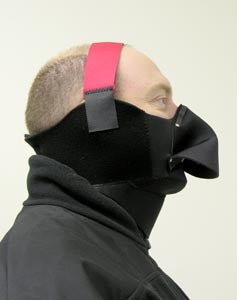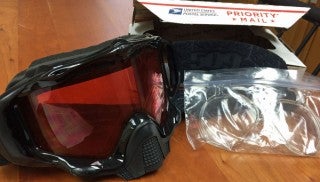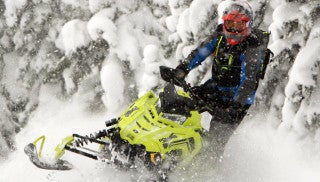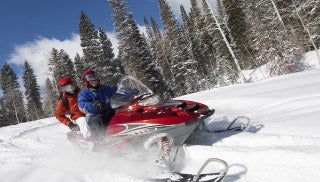No Fog Mask Helps Riders See Clearly

Vision over fashion with this accessory
Regardless of whether you wear a helmet with a face shield or a snow cross helmet and goggles, if you ride snowmobiles you’re going to experience some fogging.
There isn’t a helmet on the market that is totally fog free. Ski-Doo’s BV2S comes close, but it costs about $500. Heated visors are fairly effective as well, but they too can be costly and you’ve got wires to worry about. That’s okay if you’re sitting still while riding the trails, but can become quite annoying, if not dangerous, off trail when picking through trees or moving around on your sled.
Anti-fog sprays also work, but usually only for short periods. And if you happen to forget your spray bottle in an outside pocket or storage compartment while riding, you’re likely to find it frozen solid the next time you need to use it.
One product that has proven to be about as effective at preventing fogging as fancy helmets and electrical gadgets, but at a fraction of the cost, is the No Fog face mask from MST Corp. (www.nofogusa.com).
Made in the US and constructed of neoprene and nylon, the No Fog (approximately US$35 at retail) is light, warm and very comfortable for all day riding. The mask is available in black only (although the ‘Z Strap’ is red), and comes in three sizes—small, medium/large and extra large. However, all fasteners are Velcro and there’s plenty of adjustability, so finding one that fits shouldn’t be a problem.
 The No Fog works in both full-face and snow cross helmets, and there is a Trail version available for those who prefer open face lids. Also available is an optional MX No Fog head band that the manufacturer recommends be used to protect skin from exposure when wearing a snow cross dome.
The No Fog works in both full-face and snow cross helmets, and there is a Trail version available for those who prefer open face lids. Also available is an optional MX No Fog head band that the manufacturer recommends be used to protect skin from exposure when wearing a snow cross dome.
Our unit didn’t have the optional head band and we found the addition of a balaclava inside our snow cross helmets provided more than adequate protection, even on the coldest days (the mask is ‘fog rated’ to a low of -50 degrees F). In this situation, the manufacturer suggests putting the No Fog outside the balaclava. However, we’ve found the unit to be more effective and more comfortable doing the reverse. This may be more a matter of personal preference though, as at least one of our four testers opted to stick with the manufacturer’s recommended method.
If we have one complaint, and this is so minor it’s hardly worth mentioning, it’s that the condensation from your breath collects on the rubber-lined nose piece. Of course, this means the unit is working perfectly, but the moisture is not only unpleasant, it freezes if you leave the mask on the snowmobile seat when stopped for a break. You soon realize that when stopped, it’s best to keep the No Fog in a pocket or inside your jacket to keep it warm.
There’s no doubt the No Fog is ugly, and you might get mistaken for a duck when wearing it. But then again, if your buddies aren’t wearing one they may not be able to see you through the fog.








 Your Privacy Choices
Your Privacy Choices